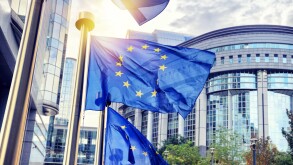Rights holders are increasingly looking abroad to tap into the potential of expanding markets, and they are also finding that deals are more complex than ever, suggests Richard Ludwin of IBM, who was speaking at the AIPLA Annual Meeting.
When developing an international IP monetization strategy, he says that companies need to adopt what he refers to as a three-dimensional analysis that takes into account not only potential licensors and buyers, but also factors such as other sellers on the market, the enforceability of your IP in a specific jurisdiction as well as the national interests of the markets involved.
In particular, he points to countries like China and India who have been developing their patent systems but are also acutely aware of their technology transfer deficits. China, for example, has a positive overall balance of transfer of $193.1 billion. For IP, however, it has a negative balance of transfer of $16.7 billion. These realities, he suggests, affect their IP policies and international licensors need to be mindful of these subtleties.
Amie Peele Carter of Faegre Baker Daniels similarly points out that trademark lawyers need to be aware of the intricacies of the client’s needs and the cultural nuances of each market.
For example, in a brand licensing deal, knowing the details of how the brand will be used, such as whether it will be a private licensing deal, a manufacturing deal or some other structure will be crucial in figuring out the terms of any agreement.
Similarly, when going into a country such as China, in addition to doing a thorough search for prior rights (such as previous registrations by trademark squatters), trademark holders need to think about considerations such as whether to use the original language version of the mark, a translation or a transliteration, and whether those words have any particular or problematic connotations in Chinese culture.
“You’ll need to consider due diligence searching and researching each version so that you’re really finding out what all the potential minefields are out there as you move forward,” she says.
Practitioners themselves also need to be aware of the nuances of local practice. Peele Carter said that when she was representing a client on a UK-based matter, she had to adjust her strategy after a UK-based colleague warned her about the “unjustified threats” rule, where a lawyer may be liable for sending a cease-and-desist letter that is later found to be unjustified.
Audrey Reed of Hogan Lovells also stresses the danger of making assumptions and being caught unaware of the legal quirks of each jurisdiction. For example, she points out that under Brazilian law, source code licenses can be for no longer than five years. However, the erstwhile licensee continues to have the right to use the source code after the agreement has expired, effectively receiving a perpetual license.
Along the same lines, Reed points out that China has fairly complex regulations on technology transfer agreements.
Imports and exports are categorized as prohibited, restricted or freely traded technology, and these categories affect how particular deals are regulated. In addition, quirks – such as no explicit prohibition on reverse engineering and restrictions on provisions requiring licensees to transfer the rights to improvements back to the licensors – mean that companies need to draft contracts that address these issues.









